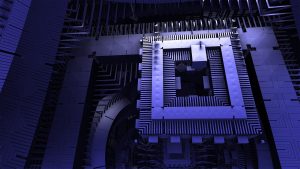CYBER AWARENESS: The Quantum Shield: Unlocking the Potential of Quantum Tokenisation
June 27, 2024Gibraltar: Friday 28 June 2024 at 08:00 CET
CYBER AWARENESS – The Quantum Shield: Unlocking the Potential of Quantum Tokenisation Across Hardware Platforms
By Susan Brown | CEO Zortrex
via CYBERInsights
First for SME Cybersecurity News
Google Indexed on 280624 at 08:30 CET
#CyberInsights #SMECyberNews #Zortrex #DataProtection #Tokenisation
CYBER AWARENESS – The Quantum Shield: Unlocking the Potential of Quantum Tokenisation Across Hardware Platforms
In the pursuit of the next frontier in cybersecurity, Quantum Tokenisation stands out as a promising technology capable of revolutionising how we secure digital assets across all hardware platforms. This innovative approach leverages the principles of quantum mechanics to offer a security solution that is not only fundamentally different but also potentially impervious to the threats that loom in the era of Quantum Computing.
Understanding Quantum Tokenisation
Quantum Tokenisation uses the unique properties of quantum states—such as superposition and entanglement—to generate secure tokens that are intrinsically protected against duplication or forgery. These tokens can serve various functions, from authenticating user access to securing communications between devices.
Advantages of Quantum Tokenisation
By embedding quantum tokens into hardware, data can be secured at the most fundamental level, making unauthorised access and decryption exceedingly difficult, if not impossible, for adversaries, including those armed with Quantum Computers.
The technology is not restricted to any specific hardware platform, making it versatile enough to be implemented in everything from microcontrollers in IoT devices to high-performance processors in data centres.
Quantum Tokenisation is seen as an initiative-taking approach to cybersecurity, preparing digital systems for a future where traditional encryption methods may no longer be sufficient against Quantum attacks.
Challenges in Implementation
While the benefits are compelling, the deployment of Quantum Tokenisation across diverse hardware platforms also presents several challenges:
The Quantum nature of the technology requires precise conditions and advanced materials, which can be challenging to integrate into existing hardware designs.
Scaling Quantum technologies to accommodate the massive volume of global digital transactions and interactions remains a daunting task that requires significant innovation and investment.
Developing global standards and regulatory frameworks for Quantum Tokenisation is crucial to ensure compatibility and security across borders and industries.
Potential Impact Across Sectors
The implementation of Quantum Tokenisation can transform multiple sectors:
* Finance: Secure transactions with quantum tokens could drastically reduce fraud and enhance trust in digital banking.
* Healthcare: Patient data could be protected with quantum-secured hardware, ensuring privacy and compliance with regulatory requirements.
* Government: Sensitive information, from classified intelligence to citizen data, could be safeguarded against both current and future Cyber threats.
Looking Ahead
The journey towards widespread adoption of Quantum Tokenisation is undoubtedly filled with technical and regulatory hurdles. However, the potential to create a universally secure hardware ecosystem makes it a worthwhile endeavour. Continued research, collaboration across academia, industry, and government, and strategic investments will be crucial to overcoming these challenges and realising the full potential of Quantum Tokenisation.
Conclusion
As we stand on the brink of a quantum era, Quantum Tokenisation offers not just a shield against emerging threats but also a beacon for advancing Cybersecurity in unprecedented ways. Its implementation across hardware platforms could mark a significant milestone in the evolution of digital security, promising a safer future for all digital interactions.










